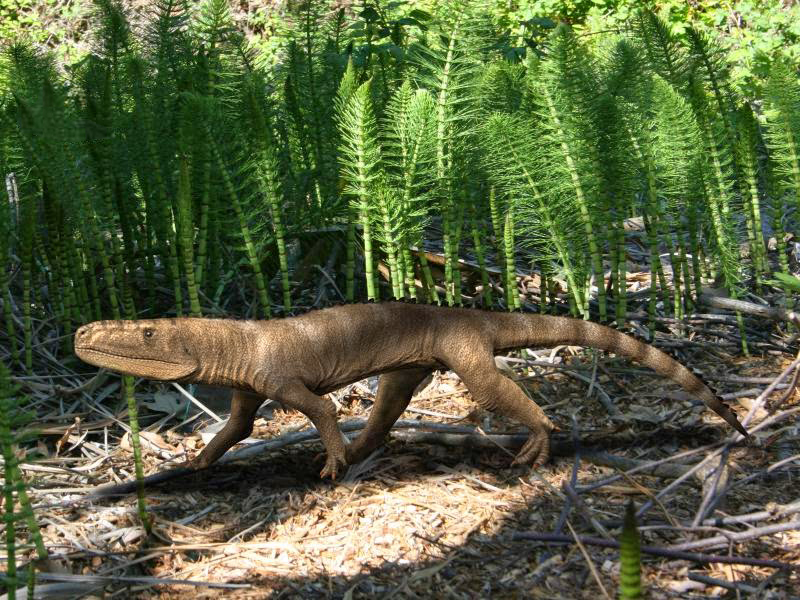The prehistoric world was a complex ecosystem where dinosaurs occupied various niches across the food chain. For 165 million years, these remarkable creatures evolved diverse feeding strategies, from massive plant-eaters that consumed tons of vegetation daily to fearsome predators that hunted with precision and power. The dietary habits of dinosaurs reveal not just what they ate, but how they shaped their environments and evolved specialized adaptations. Understanding what dinosaurs ate—and what ate them—provides a fascinating window into the intricate balance of prehistoric life, where being either predator or prey drove evolutionary innovations still marveled at today.
The Herbivore Revolution: Plant-Eating Dinosaurs

Herbivorous dinosaurs represented the most numerous dietary group and evolved into some of the largest land animals ever to walk the Earth. These gentle giants, including sauropods like Brachiosaurus and Diplodocus, developed specialized digestive systems to process tough plant matter efficiently. Their feeding strategies varied widely, with some being high browsers that could reach vegetation up to 40 feet above ground, while others were low browsers that focused on ground-level plants. Most herbivorous dinosaurs had relatively small heads with specialized teeth designed for slicing or grinding plant material rather than tearing flesh. The continuous wear on these teeth from processing fibrous plants led to unique adaptations, including batteries of replacement teeth that would continually grow and replace worn teeth throughout their lives. Herbivores ultimately converted massive amounts of plant energy into animal protein, making them essential foundations of dinosaur-era food webs.
Sauropod Feeding Strategies: Eating at New Heights

Sauropods, with their unmistakable long necks and massive bodies, revolutionized herbivory by accessing food sources no other animals could reach. Their elongated necks, sometimes containing over 15 vertebrae, allowed them to feed from the tops of tall conifers and tree ferns without moving their enormous bodies. Unlike modern herbivores, sauropods didn’t chew their food but instead swallowed vegetation whole and processed it in their barrel-like stomachs, which likely contained gastroliths (stomach stones) to help grind plant material. Scientific studies of their tooth wear patterns suggest that different sauropod species specialized in different types of vegetation, preventing direct competition despite sharing habitats. Some species, like Diplodocus, had rake-like teeth perfect for stripping leaves from branches, while others had more spoon-shaped teeth suited for softer vegetation. A single large sauropod could consume hundreds of pounds of plant matter daily, making them walking ecological forces that significantly shaped the landscape of the Mesozoic forests.
Ornithischian Innovations: Chewing Like Champions

Ornithischian dinosaurs, including creatures like Triceratops, Stegosaurus, and hadrosaurs, developed some of the most sophisticated plant-processing equipment in dinosaur evolution. Unlike sauropods, these herbivores actually chewed their food, using complex dental batteries with hundreds of teeth arranged in tight columns that worked together as grinding surfaces. Hadrosaurs (duck-billed dinosaurs) perfected this system with up to 800 teeth that created efficient grinding platforms, allowing them to process tougher, more fibrous plant material than other dinosaurs. Some ornithischians, like Triceratops, evolved specialized beaks that could selectively crop vegetation before passing it to their grinding teeth. Paleontologists have found evidence that certain ornithischians may have had cheeks—unusual for reptiles—which helped them keep food in their mouths during extended chewing, much like modern mammals. The remarkable efficiency of these feeding adaptations explains why ornithischians became the dominant herbivores in many late Cretaceous ecosystems, diversifying into numerous successful families.
Theropod Feeding: Carnivores at the Top

Theropod dinosaurs, the primarily carnivorous group that includes Tyrannosaurus rex and Velociraptor, were the apex predators of their ecosystems, equipped with specialized adaptations for hunting and meat consumption. Their serrated, blade-like teeth were designed to slice through flesh and tendons, causing catastrophic blood loss in prey. Unlike herbivores, most carnivorous theropods had relatively few teeth, but each was specialized for maximum killing efficiency, with some larger species possessing teeth up to 12 inches long with serrations that functioned like built-in steak knives. Bite force studies on theropod skull fossils suggest that larger species like T. rex could exert pressures exceeding 12,000 pounds per square inch—strong enough to crush bones and extract nutritious marrow. Biomechanical analyses of theropod jaws indicate they used different hunting techniques: some relied on precision bites to vital areas, while others employed bone-crushing force or slashing attacks to disable prey. Theropods also demonstrated a surprising range of head sizes and shapes, suggesting specialization for different prey types and hunting strategies across their 165-million-year reign.
Specialized Carnivores: Diversity in Predatory Strategies

Not all carnivorous dinosaurs hunted the same way, with evolution driving remarkable specialization among different theropod lineages. Spinosaurids like Spinosaurus and Baryonyx evolved crocodile-like snouts and conical teeth perfectly adapted for catching and holding slippery fish, with evidence of fish scales found in the stomach contents of some specimens. Dromaeosaurids (raptors) developed sickle-shaped killing claws on their feet, which they likely used to pin down smaller prey while delivering precision bites with their jaws. Some theropods evolved unusually long arms with huge claws, like the 8-foot arms of Deinocheirus, potentially used for hooking and pulling vegetation or digging for prey. The strangest carnivore adaptations appeared in therizinosaurs, which had enormous scythe-like claws up to three feet long but likely used them primarily for pulling down branches as these formerly carnivorous theropods transitioned to herbivory. Fossil evidence, including stomach contents, tooth marks on bones, and coprolites (fossilized feces), has allowed paleontologists to reconstruct these varied feeding strategies with increasing confidence in recent decades.
Omnivorous Opportunists: The Dietary Middle Ground

Some dinosaurs defied strict classification as either herbivores or carnivores, instead evolving adaptations for omnivorous diets that provided dietary flexibility. Ornithomimids, often called “ostrich dinosaurs,” had toothless beaks suited for a variety of foods, with evidence suggesting they consumed everything from plants and seeds to small animals and eggs. The unusual oviraptorid dinosaurs combined toothless beaks with powerful jaws that could crush hard objects, possibly specializing in eating shellfish, nuts, eggs, and occasionally small vertebrates. Gallimimus, another omnivorous theropod, possessed a beak-like structure with comb-like filtering structures that may have allowed it to strain small organisms from water or mud, similar to modern flamingos. Paleontologists have found that some primarily herbivorous dinosaurs occasionally supplemented their plant-based diets with insects, small vertebrates, or carrion when opportunities arose. This dietary flexibility likely proved advantageous during seasonal food shortages or environmental changes, potentially explaining why some omnivorous dinosaur lineages survived major ecological disruptions that eliminated more specialized feeders.
The Apex Predators: T. rex and Other Mega-Carnivores
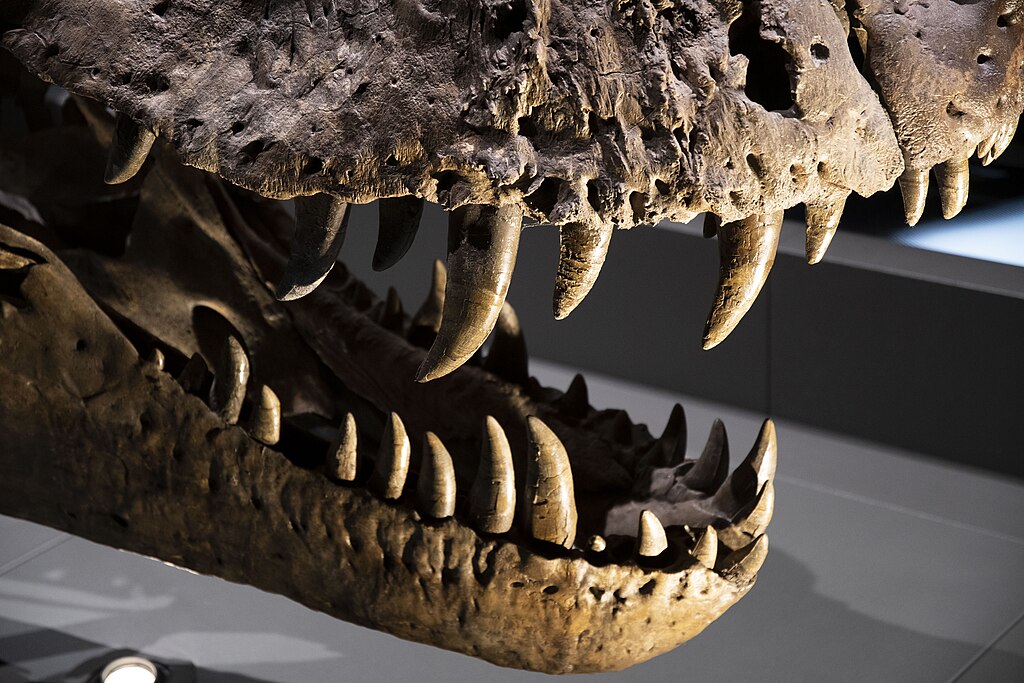
At the top of the dinosaur food chain stood an elite group of mega-carnivores, with Tyrannosaurus rex representing the pinnacle of theropod evolution in the Late Cretaceous of North America. Reaching lengths of up to 40 feet and weights of 9 tons, T. rex possessed the strongest bite force of any land animal ever measured, with studies suggesting it could exert forces up to 12,800 pounds – strong enough to crush a car. Its bone-crunching abilities are confirmed by fossilized feces containing bone fragments and distinctive tooth marks found on prey dinosaur bones. Equally impressive apex predators ruled other continents, including the slightly larger Giganotosaurus and Carcharodontosaurus in South America and Africa, which hunted massive sauropods. Specialized killing adaptations varied between these top predators: T. rex relied more on crushing power and a reinforced skull, while Carcharodontosaurus had blade-like teeth optimized for slicing through flesh. Recent research suggests many of these mega-carnivores were active hunters rather than pure scavengers, with biomechanical studies showing they could run at speeds of 10-25 mph—fast enough to overtake many of their herbivorous prey.
Pack Hunters: Strength in Numbers

Not all carnivorous dinosaurs relied on massive size to bring down prey; some evolved sophisticated pack-hunting behaviors that made them formidable predators despite their relatively small individual size. Deinonychus, a 10-foot-long dromaeosaurid weighing roughly 150 pounds, left fossil evidence suggesting it hunted in coordinated groups to take down Tenontosaurus, a herbivore five times its size. Multiple Deinonychus skeletons have been found associated with single Tenontosaurus specimens, indicating these predators sometimes died during group hunting attempts. Similar evidence exists for other theropods, including Allosaurus, where multiple individuals of different ages have been found at single kill sites. Modern computer modeling of dinosaur social behavior suggests that pack hunting would have been particularly advantageous for medium-sized predators, allowing them to target much larger prey than they could handle individually. Trackway evidence occasionally shows multiple carnivorous dinosaurs moving in parallel, potentially indicating coordinated movement similar to modern pack hunters like wolves. This social hunting behavior would have dramatically increased the predatory pressure on large herbivores, which evolved defensive adaptations in response.
Scavengers and Cleanup Crews: Nature’s Recyclers
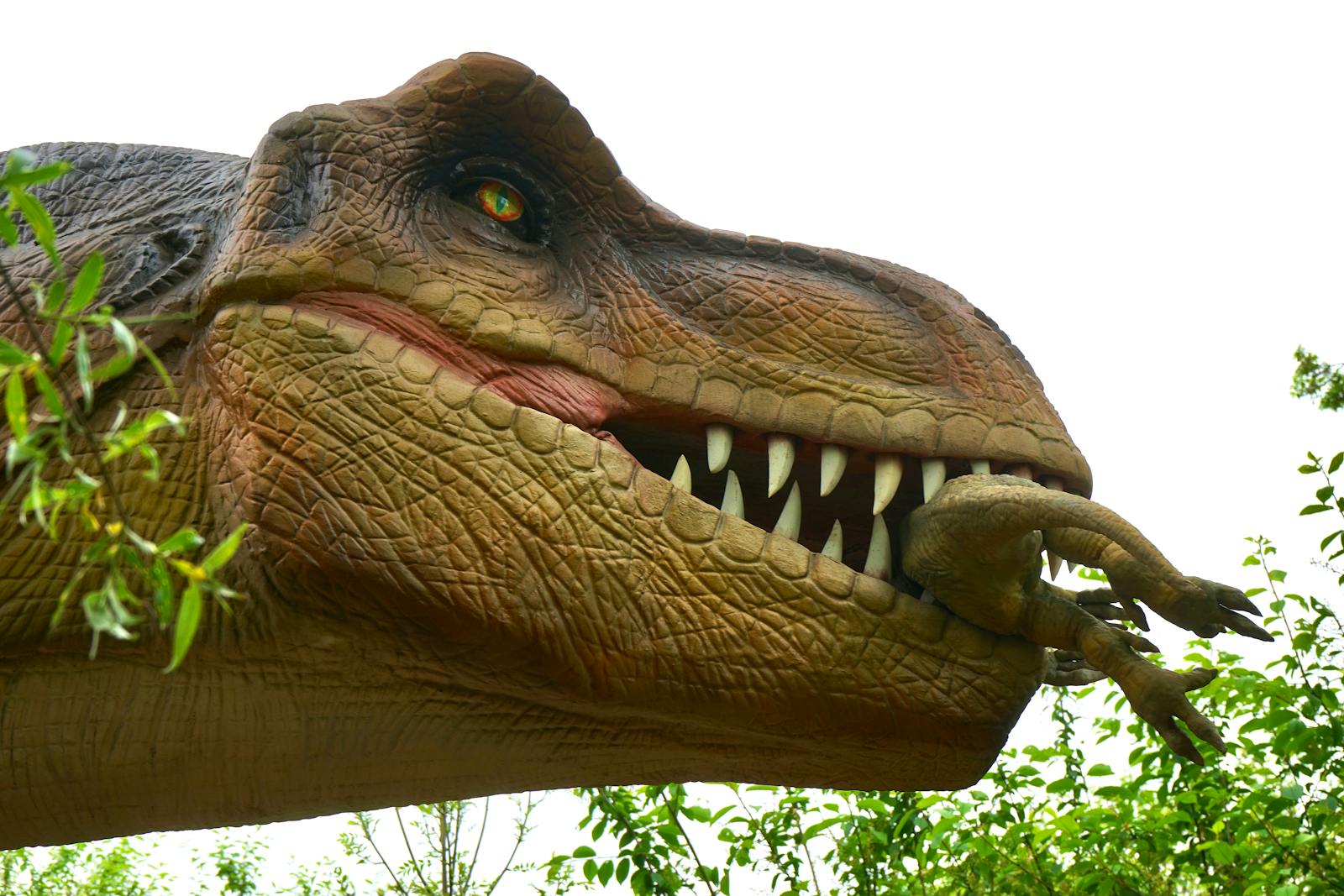
The dinosaur ecosystem included specialized scavengers that played crucial roles in recycling nutrients and preventing disease spread. Some smaller theropods likely specialized in scavenging rather than hunting, evidenced by certain anatomical features like enhanced olfactory bulbs for detecting carrion from great distances. Paleontologists have identified potential specialized scavengers among dinosaurs based on features like weaker bite forces combined with stronger neck muscles for pulling flesh from carcasses rather than killing prey. The debate around Tyrannosaurus rex’s feeding behavior continues, with some evidence suggesting it was an opportunistic scavenger-hunter that would both kill when possible and exploit carcasses when available. Fossil evidence of healed bite marks on herbivore bones indicates that some dinosaurs survived predatory attacks, while other specimens show signs of having been fed upon by multiple carnivore species in succession, demonstrating a scavenging hierarchy. Insects also played crucial roles in the decomposition process, with fossilized dung beetles and their tunnels found in association with coprolites, showing that even dinosaur waste supported specialized decomposer communities.
Defensive Adaptations: Staying Off the Menu
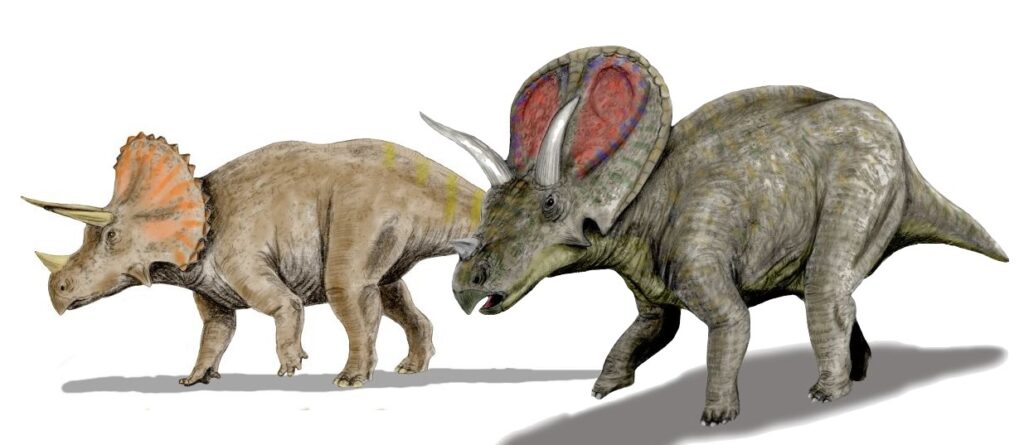
Herbivorous dinosaurs evolved an impressive array of defensive adaptations to avoid becoming prey, creating an evolutionary arms race with predators. The most visually striking defenses appeared in ceratopsians like Triceratops, which evolved elaborate horn and frill arrangements that served both as visual deterrents and as effective weapons against attacking predators. Ankylosaurs developed the most extreme armor among dinosaurs, with species like Ankylosaurus protected by thick bony plates embedded in their skin and wielding a massive tail club capable of breaking a predator’s leg with a single blow. The stegosaurs combined dorsal plates for display and temperature regulation with tail spikes (thagomizers) that could inflict serious wounds, as evidenced by an Allosaurus fossil with a puncture wound matching a Stegosaurus tail spike. Beyond physical defenses, many herbivores relied on herding behavior, with trackway evidence showing multiple individuals of the same species traveling together, likely providing safety in numbers against predators. Some herbivores, particularly hadrosaurs, appear to have evolved enhanced senses and the ability to run at sustained speeds of 20-25 mph, allowing them to detect and flee from threats rather than standing their ground.
Predator-Prey Relationships: The Evolutionary Arms Race
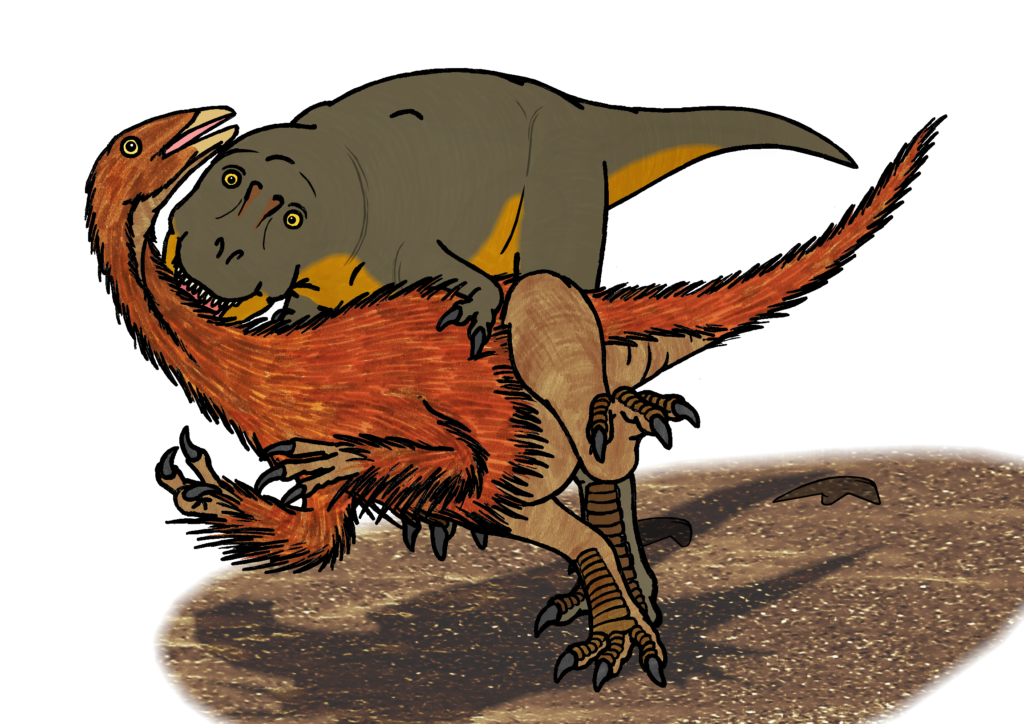
The ongoing evolutionary battle between predators and prey drove much of dinosaur evolution, with each adaptation on one side prompting counter-adaptations on the other. As herbivores evolved larger size for protection, predators evolved stronger jaws and more efficient killing strategies. When ceratopsians developed defensive frills and horns, predators like Tyrannosaurus developed reinforced skulls and enormous bite forces to overcome these defenses. Evidence of this arms race appears in the fossil record, with predator tooth marks on prey bones sometimes showing signs of healing, indicating unsuccessful attacks that both animals survived. Geographic variations in predator-prey dynamics have been documented, with isolated ecosystems like islands often developing unique relationships where predators and prey co-evolved specific adaptations to each other. The tempo of this evolutionary arms race varied across the Mesozoic, with particularly rapid diversification following mass extinction events when ecological niches opened up and new predator-prey relationships could establish. By the Late Cretaceous, this arms race had produced some of the most specialized predators and heavily-defended prey species in Earth’s history, creating complex ecosystems with multiple trophic levels.
Prehistoric Food Webs: Complex Ecological Networks

Dinosaur ecosystems functioned through intricate food webs with multiple trophic levels, creating balanced ecological networks. At the base, primary producers like conifers, cycads, ferns, and the newly-evolved flowering plants converted sunlight into energy that flowed up through the system. Primary consumers included a diverse array of herbivorous dinosaurs specialized for different vegetation types, from ground-level plants to high tree foliage. Secondary consumers—carnivores of various sizes—preyed upon these herbivores, with smaller predators typically targeting juvenile herbivores while larger carnivores could take down adult specimens. Tertiary consumers, including the largest theropods, could prey upon other carnivores, creating additional complexity in the energy transfer system. Mesozoic food webs included non-dinosaurian components as well, with mammals, lizards, crocodilians, pterosaurs, insects, and aquatic organisms all interacting with dinosaurs in various ways. The stability of these complex food webs allowed dinosaur-dominated ecosystems to persist for 165 million years across dramatic climate changes and continental reconfigurations, demonstrating their remarkable ecological resilience. Only the catastrophic asteroid impact at the end of the Cretaceous finally disrupted these intricate relationships beyond their capacity to recover.
What Ate Dinosaurs: Predators of the Mighty

While adult dinosaurs often stood at the top of food chains, they faced numerous predators throughout their lifecycles. Young dinosaurs were particularly vulnerable, with fossil evidence showing small theropods and crocodilians frequently preyed upon dinosaur hatchlings and juveniles. Egg predation represented a significant mortality factor, with mammals, lizards, and small dinosaurs all known to raid nests, as evidenced by crushed eggshells and occasional stomach contents. Crocodilians evolved as specialized dinosaur hunters in semi-aquatic environments, with giant species like Deinosuchus reaching lengths of 33 feet and leaving distinctive bite marks on dinosaur bones found in coastal and riverine deposits. Some evidence suggests large pterosaurs may have occasionally preyed on small dinosaurs, particularly in coastal environments where species like Quetzalcoatlus could have captured juvenile dinosaurs. Disease and parasites constituted another form of predation, with fossilized evidence of bacterial infections, fungal diseases, and parasitic infestations found in dinosaur remains. Even the largest adult dinosaurs became prey after death, with scavengers ranging from mammals and small dinosaurs to insects and microbes recycling their remains back into the ecosystem.
The prehistoric world witnessed an intricate dance of predator and prey relationships centered around dinosaurs. From the massive plant-processing machinery of sauropods and hadrosaurs to the precision killing tools of theropods, dinosaurs evolved specialized adaptations for acquiring and processing their food. Simultaneously, they developed elaborate defenses to avoid becoming meals themselves. This 165-million-year arms race between predator and prey drove the evolution of some of the most remarkable creatures ever to walk the Earth. Understanding what dinosaurs ate—and what ate them—provides crucial insight into how these magnificent animals functioned as parts of complex ecosystems. Their feeding relationships, preserved in fossils as tooth marks, stomach contents, and coprolites, continue to reveal new details about prehistoric life, reminding us that even



